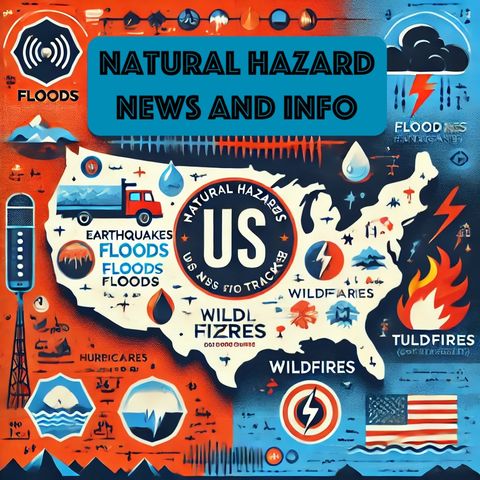Bracing for the Storm: USGS Warns of Heightened Coastal Risks as Hurricane Milton Approaches Florida's West Coast

Download and listen anywhere
Download your favorite episodes and enjoy them, wherever you are! Sign up or log in now to access offline listening.
Bracing for the Storm: USGS Warns of Heightened Coastal Risks as Hurricane Milton Approaches Florida's West Coast
This is an automatically generated transcript. Please note that complete accuracy is not guaranteed.
Description
As Hurricane Milton barrels towards Florida’s west coast, the U.S. Geological Survey (USGS) coastal change experts are raising alarms about significant risks to the region, still reeling from the impact...
show moreThe USGS has been meticulously studying coastal changes and their resultant risks, focusing on how hurricanes reshape shorelines. Post-Hurricane Helene, the structures of barrier islands and sand dunes—nature’s first line of defense against storm surges—have been significantly compromised. Their erosion leaves the coastline more susceptible to the onslaught of Hurricane Milton’s approach. These natural formations typically absorb storm energy and help prevent inland flooding, but with their current weakened state, the potential for severe flooding has drastically increased.
One of the critical concerns outlined by USGS scientists is the risk of coastal erosion, which not only threatens wildlife habitats and ocean-side infrastructure but also increases the vulnerability of inland areas. The sediment displacement caused by Helene has been extensive, leading scientists to predict that even moderate storm surges from Milton could cause severe and widespread erosion. This erosion could have lasting impacts, potentially altering the coastline permanently, affecting tourism, local economies, and natural resources.
Adding to the urgency, USGS experts are calling for heightened preparedness measures across Florida’s west coast. Communities are advised to be vigilant, with local governments urged to revisit evacuation plans and reinforce their coastal defense strategies. Historical data gleaned from previous hurricane events underline the importance of timely action to mitigate possible catastrophes.
Beyond immediate physical damage, the back-to-back storms have stark implications for ecosystems. The rapid successions of natural calamities hinder the regions’ ability to recover, thereby potentially leading to long-term ecological changes. Mangroves, coral reefs, and estuaries, which are already stressed ecosystems, face additional threats from hurricane-driven pollution and habitat destruction. These ecosystems play crucial roles in biodiversity, support fisheries, and protect the coasts, but their ability to perform these functions diminishes with every storm event.
The USGS’s role in this looming crisis is proving pivotal. Using predictive modeling and data from previous hurricanes, the agency is providing real-time analysis to help guide emergency response and recovery efforts. Their comprehensive research assists in pinpointing the most vulnerable areas, allowing for more efficient allocation of resources and better-informed policy decisions.
Public awareness campaigns spearheaded by USGS are also underway, aiming to educate residents about the risks and encourage proactive steps towards safety. These initiatives stress the importance of understanding one’s environment and the changes it may undergo due to climatic events.
As Hurricane Milton draws near, the concerted efforts of scientific institutions, local authorities, and community stakeholders are crucial in addressing the multifaceted challenges posed by these destructive natural events. Although the path to complete safety and recovery is fraught with complexity, the knowledge and strategies developed by agencies like the USGS are invaluable tools in navigating these stormy waters.
Information
| Author | QP-4 |
| Organization | William Corbin |
| Website | - |
| Tags |
Copyright 2024 - Spreaker Inc. an iHeartMedia Company

Comments